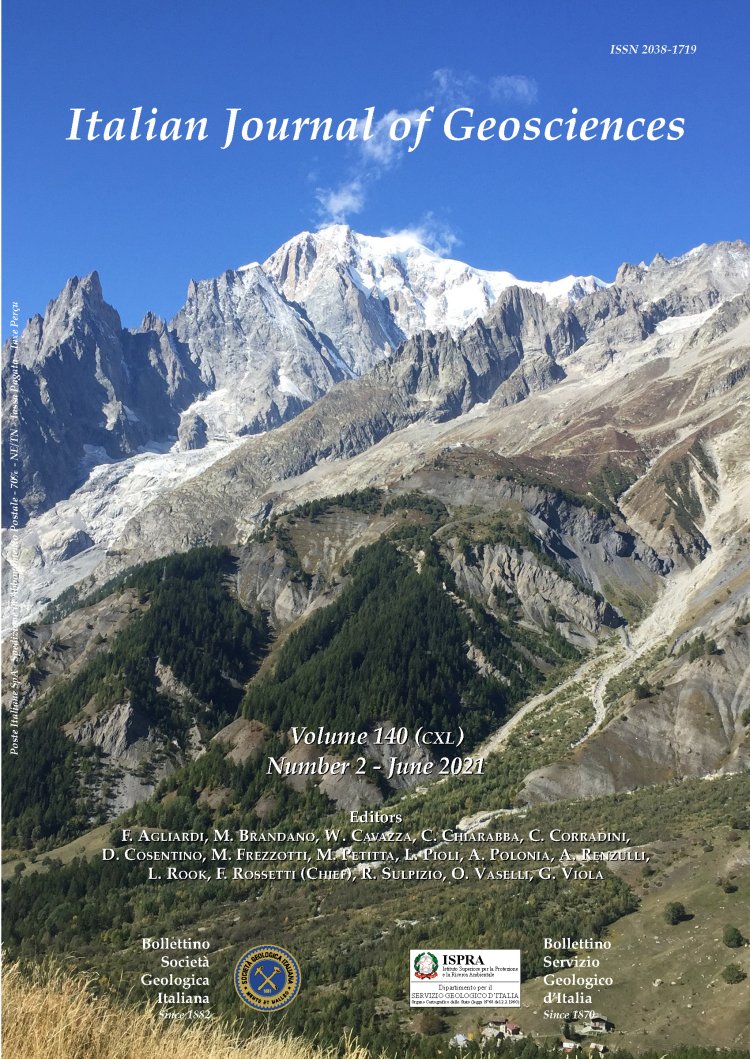
Hybrid event bed distribution in a mixed siliciclastic-calcareous turbidite succession: a cross-current perspective from the Bordighera Sandstone, Ligurian Alps, NW Italy
Pierre Mueller (1), Marco Patacci (2) & Andrea Di Giulio (1)
(1) University of Pavia, Department of Earth and Environmental Sciences, 27100 Pavia, Italia.
(2) Turbidites Research Group, School of Earth and Environment, University of Leeds, Leeds, LS2 9JT, United Kingdom. Corresponding author e-mail: pierre.mueller01@universitadipavia.it
Volume: 140 (2021) f.2
Pages: 255-274
Abstract
Transitional flow deposits (TFDs) and hybrid event beds (HEBs) form part of the high-density sediment gravity flow spectrum. They record flow characteristics intermediate between fully turbulent and laminar flow states. The transformation from initially frictional into transitional or quasi-laminar cohesive flow behaviour results from enhanced detrital clay concentrations that dampen flow turbulence, triggering the development of an argillaceous sandstone interval that displays characteristics of a cohesive debris flow deposit. Since excess detrital clay proportions reduce primary porosity and permeability, the presence of TFDs and HEBs hinders turbidite sandstone reservoir properties. In applied scenarios, understanding their spatial distribution is crucial for avoiding well misplacement. Spatial distribution models for TFDs and HEBs largely document them as a characteristic feature of distal and lateral outer fan environments. These models are compared with results from facies analysis conducted on a dataset derived from the detailed investigation of three stratigraphic sections, acquired along a cross-current transect of the distal depositional domain of the Bordighera Sandstone (BGS). In its distal domain, the sand-rich Bordighera turbidite system is characterized by direct interbedding with calcareous fine-grained turbidites of the Sanremo Helminthoid Flysch, and features high proportions of HEBs and TFDs. Analysis of spatial trends in facies distribution allows the detailed allocation of intra- bed- to sandbody-scale heterogeneity to different axial and off-axis lobe sub-environments which are determined through quantitative sedimentological parameters. Results reveal that in the Bordighera turbidite system argillaceous sandstone bed types are not limited to lobe-fringe environments, but instead are primarily occurring in more proximal high net-to-gross zones of the largely unconfined terminal lobe domain. They account for more than 60% of stratigraphic thickness in axial zones (net-to-gross ratio = 0.87), whereas their proportions decrease towards off-axis lobe (36%; net-to-gross = 0.58) and marginal lobe to lobe fringe domains (23%; net-to-gross = 0.49).
Keywords
mixed siliciclastic-calcareous system, high-net- sand turbidite system, hybrid event beds, transitional flow deposits, quantitative facies analysis.
Get Full Text